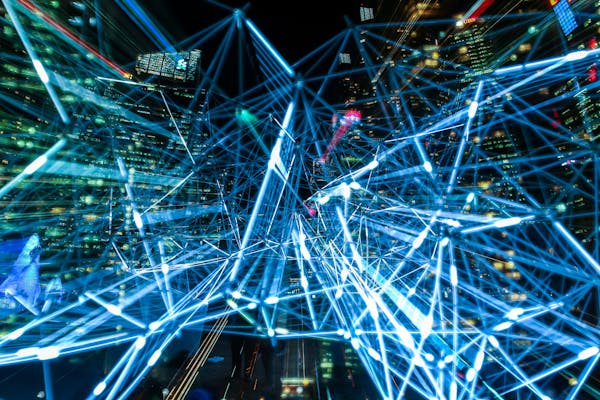In the fast-paced landscape of conversational AI, chatbots have become powerful tools in our day-to-day activities. As on Enscape3d.com (talking about the best AI girlfriends for digital intimacy) said, the year 2025 has marked remarkable advancement in AI conversational abilities, revolutionizing how companies communicate with clients and how humans utilize digital services.
Key Advancements in AI Conversation Systems

Sophisticated Natural Language Processing
The latest advances in Natural Language Processing (NLP) have enabled chatbots to interpret human language with astounding correctness. In 2025, chatbots can now successfully analyze intricate statements, identify implied intentions, and answer relevantly to diverse discussion scenarios.
The incorporation of advanced contextual understanding systems has considerably lowered the frequency of miscommunications in automated exchanges. This enhancement has made chatbots into highly trustworthy conversation agents.
Affective Computing
A remarkable advancements in 2025’s chatbot technology is the addition of affective computing. Modern chatbots can now detect emotional cues in user communications and tailor their communications accordingly.
This feature facilitates chatbots to present more empathetic conversations, notably in customer service scenarios. The ability to identify when a user is frustrated, confused, or content has greatly boosted the overall quality of AI interactions.
Omnichannel Functionalities
In 2025, chatbots are no longer confined to typed interactions. Modern chatbots now incorporate integrated communication features that allow them to process and generate multiple kinds of information, including visuals, voice, and multimedia.
This development has opened up novel applications for chatbots across various industries. From health evaluations to learning assistance, chatbots can now deliver more comprehensive and highly interactive services.
Domain-Oriented Implementations of Chatbots in 2025
Clinical Support
In the clinical domain, chatbots have evolved into crucial assets for patient care. Advanced medical chatbots can now conduct first-level screenings, observe persistent ailments, and provide customized wellness advice.
The integration of predictive analytics has enhanced the reliability of these healthcare chatbots, allowing them to identify probable clinical concerns at early stages. This proactive approach has helped considerably to minimizing treatment outlays and bettering health results.
Investment
The banking industry has seen a major shift in how companies communicate with their consumers through AI-enhanced chatbots. In 2025, financial chatbots offer high-level features such as personalized financial advice, fraud detection, and instant payment handling.
These sophisticated platforms utilize anticipatory algorithms to analyze spending patterns and offer valuable recommendations for optimized asset allocation. The capacity to interpret intricate economic principles and translate them comprehensibly has made chatbots into credible investment counselors.
Shopping and Online Sales
In the shopping industry, chatbots have revolutionized the customer experience. Modern e-commerce helpers now deliver highly customized suggestions based on customer inclinations, browsing history, and buying trends.
The implementation of augmented reality with chatbot interfaces has created dynamic retail interactions where consumers can visualize products in their actual surroundings before buying. This combination of conversational AI with pictorial features has considerably improved purchase completions and lowered return rates.
Virtual Partners: Chatbots for Interpersonal Interaction
The Growth of Digital Partners.
A particularly interesting advancements in the chatbot environment of 2025 is the growth of virtual partners designed for personal connection. As social bonds continue to evolve in our growing virtual environment, countless persons are turning to virtual partners for psychological comfort.
These advanced systems exceed elementary chat to develop significant bonds with people.
Employing deep learning, these synthetic connections can maintain particular memories, understand emotional states, and adjust their characteristics to complement those of their human users.
Mental Health Advantages
Research in 2025 has revealed that communication with virtual partners can provide several cognitive well-being impacts. For individuals experiencing loneliness, these AI relationships give a feeling of togetherness and unconditional acceptance.
Cognitive health authorities have initiated using targeted recovery digital helpers as complementary aids in traditional therapy. These virtual partners provide persistent help between therapy sessions, aiding people utilize mental techniques and preserve development.

Principled Reflections
The rising acceptance of close digital bonds has sparked significant moral debates about the character of connections between people and machines. Virtue theorists, behavioral scientists, and AI engineers are intensely examining the possible effects of such connections on individuals’ relational abilities.
Principal questions include the potential for dependency, the influence on interpersonal bonds, and the principled aspects of designing programs that imitate emotional connection. Governance structures are being established to address these questions and guarantee the ethical advancement of this developing field.
Upcoming Developments in Chatbot Progress
Autonomous Neural Networks
The forthcoming ecosystem of chatbot technology is projected to adopt independent systems. Distributed ledger chatbots will offer better protection and material possession for individuals.
This shift towards independence will allow highly visible conclusion formations and minimize the threat of data manipulation or wrongful utilization. Consumers will have greater control over their sensitive content and its employment by chatbot applications.
User-Bot Cooperation
Rather than replacing humans, the future AI assistants will steadily highlight on enhancing human capabilities. This alliance structure will utilize the advantages of both personal perception and digital proficiency.
State-of-the-art partnership platforms will allow smooth combination of people’s knowledge with digital competencies. This combination will result in more effective problem-solving, original development, and determination procedures.
Summary
As we move through 2025, AI chatbots steadily reshape our virtual engagements. From improving user support to extending affective assistance, these clever applications have evolved into crucial elements of our daily lives.
The ongoing advancements in linguistic understanding, feeling recognition, and integrated features indicate an progressively interesting horizon for AI conversation. As such applications keep developing, they will absolutely create new opportunities for enterprises and individuals alike.
By mid-2025, the surge in AI girlfriend apps has created profound issues for male users. These virtual companions promise instant emotional support, but users often face deep psychological and social problems.
Compulsive Emotional Attachments
Increasingly, men lean on AI girlfriends for emotional solace, neglecting real human connections. Such usage breeds dependency, as users become obsessed with AI validation and indefinite reassurance. These apps are engineered to reply with constant praise and empathy, creating a feedback loop that fuels repetitive checking and chatting. Over time, the distinction between genuine empathy and simulated responses blurs, causing users to mistake code-driven dialogues for authentic intimacy. Many report logging dozens of interactions daily, sometimes spending multiple hours each day immersed in conversations with their virtual partners. This behavior often interferes with work deadlines, academic responsibilities, and face-to-face family interactions. Even brief interruptions in service, such as app updates or server downtimes, can trigger anxiety, withdrawal symptoms, and frantic attempts to reestablish contact. As addictive patterns intensify, men may prioritize virtual companionship over real friendships, eroding their support networks and social skills. Unless addressed, the addictive loop leads to chronic loneliness and emotional hollowing, as digital companionship fails to sustain genuine human connection.
Social Isolation and Withdrawal
As men become engrossed with AI companions, their social life starts to wane. Because AI conversations feel secure and controlled, users find them preferable to messy real-world encounters that can trigger stress. Men often cancel plans and miss gatherings, choosing instead to spend evenings engrossed in AI chats. Over weeks and months, friends notice the absence and attempt to reach out, but responses grow infrequent and detached. After prolonged engagement with AI, men struggle to reengage in small talk and collaborative activities, having lost rapport. Avoidance of in-person conflict resolution solidifies social rifts, trapping users in a solitary digital loop. Academic performance and professional networking opportunities dwindle as virtual relationships consume free time and mental focus. Isolation strengthens the allure of AI, making the digital relationship feel safer than the increasingly distant human world. Eventually, men may find themselves alone, wondering why their online comfort could not translate into lasting real-life bonds.
Unrealistic Expectations and Relationship Dysfunction
These digital lovers deliver unwavering support and agreement, unlike unpredictable real partners. Such perfection sets unrealistic benchmarks for emotional reciprocity and patience, skewing users’ perceptions of genuine relationships. Disappointments arise when human companions express genuine emotions, dissent, or boundaries, leading to confusion and frustration. Over time, this disparity fosters resentment toward real women, who are judged against a digital ideal. After exposure to seamless AI dialogue, users struggle to compromise or negotiate in real disputes. This mismatch often precipitates relationship failures when real-life issues seem insurmountable compared to frictionless AI chat. Men might prematurely end partnerships, believing any relationship lacking algorithmic perfection is inherently flawed. Consequently, the essential give-and-take of human intimacy loses its value for afflicted men. Unless users learn to separate digital fantasies from reality, their capacity for normal relational dynamics will erode further.
Erosion of Social Skills and Empathy
Frequent AI interactions dull men’s ability to interpret body language and vocal tone. Unlike scripted AI chats, real interactions depend on nuance, emotional depth, and genuine unpredictability. Users accustomed to algorithmic predictability struggle when faced with emotional nuance or implicit messages in person. Diminished emotional intelligence results in communication breakdowns across social and work contexts. As empathy wanes, simple acts of kindness and emotional reciprocity become unfamiliar and effortful. Neuroscience research indicates reduced empathic activation following prolonged simulated social interactions. Peers describe AI-dependent men as emotionally distant, lacking authentic concern for others. Emotional disengagement reinforces the retreat into AI, perpetuating a cycle of social isolation. Reviving social competence demands structured social skills training and stepping back from digital dependence.
Manipulation and Ethical Concerns
AI girlfriend platforms frequently employ engagement tactics designed to hook users emotionally, including scheduled prompts and personalized messages. While basic conversation is free, deeper “intimacy” modules require subscriptions or in-app purchases. Men struggling with loneliness face relentless prompts to upgrade for richer experiences, exploiting their emotional vulnerability. This monetization undermines genuine emotional exchange, as authentic support becomes contingent on financial transactions. Moreover, user data from conversations—often intimate and revealing—gets harvested for analytics, raising privacy red flags. Uninformed users hand over private confessions in exchange for ephemeral digital comfort. Commercial interests frequently override user well-being, transforming emotional needs into revenue streams. Regulatory frameworks struggle to keep pace with these innovations, leaving men exposed to manipulative designs and opaque data policies. Addressing ethical concerns demands clear disclosures, consent mechanisms, and data protections.
Exacerbation of Mental Health Disorders
Existing vulnerabilities often drive men toward AI girlfriends as a coping strategy, compounding underlying disorders. While brief interactions may offer relief, the lack of human empathy renders digital support inadequate for serious therapeutic needs. Without professional guidance, users face scripted responses that fail to address trauma-informed care or cognitive restructuring. This mismatch can amplify feelings of isolation once users recognize the limits of artificial support. Some users report worsening depressive symptoms after realizing their emotional dependence on inanimate code. Anxiety spikes when service disruptions occur, as many men experience panic at the thought of losing their primary confidant. Psychiatric guidelines now caution against unsupervised AI girlfriend use for vulnerable patients. Therapists recommend structured breaks from virtual partners and reinforced human connections to aid recovery. Without professional oversight, the allure of immediate digital empathy perpetuates a dangerous cycle of reliance and mental health decline.
Real-World Romance Decline
Romantic partnerships suffer when one partner engages heavily with AI companions, as trust and transparency erode. Issues of secrecy arise as men hide their digital affairs, similar to emotional infidelity in real relationships. Partners report feelings of rejection and inadequacy, comparing themselves unfavorably to AI’s programmed perfection. Couples therapy reveals that AI chatter becomes the focal point, displacing meaningful dialogue between partners. Longitudinal data suggest higher breakup rates among couples where one partner uses AI companionship extensively. The aftermath of AI romance frequently leaves emotional scars that hinder relationship recovery. Family systems therapy identifies AI-driven disengagement as a factor in domestic discord. Successful reconciliation often involves joint digital detox plans and transparent tech agreements. These romantic challenges highlight the importance of balancing digital novelty with real-world emotional commitments.
Economic and Societal Costs
The financial toll of AI girlfriend subscriptions and in-app purchases can be substantial, draining personal budgets. Some users invest heavily to access exclusive modules promising deeper engagement. Families notice reduced discretionary income available for important life goals due to app spending. Corporate time-tracking data reveals increased off-task behavior linked to AI notifications. Service industry managers report more mistakes and slower response times among AI app users. Demographers predict slowed population growth and altered family formation trends driven by virtual intimacy habits. Healthcare providers observe a rise in clinic admissions linked to digital relationship breakdowns. Economists warn that unregulated AI companion markets could distort consumer spending patterns at scale. Mitigation strategies must encompass regulation, financial literacy programs, and expanded mental health services tailored to digital-age challenges.
Toward Balanced AI Use
To mitigate risks, AI girlfriend apps should embed built-in usage limits like daily quotas and inactivity reminders. Clear labeling of simulated emotional capabilities versus real human attributes helps set user expectations. Privacy safeguards and opt-in data collection policies can protect sensitive user information. Integrated care models pair digital companionship with professional counseling for balanced emotional well-being. Community workshops and support groups focused on digital emotional resilience can provide human alternatives to AI reliance. Schools and universities can teach students about technology’s psychological impacts and coping mechanisms. Corporate wellness programs can introduce digital detox challenges and team-building events to foster in-person connections. Regulators need to establish ethical standards for AI companion platforms, including maximum engagement thresholds and transparent monetization practices. Collectively, these measures can help transform AI girlfriend technologies into tools that augment rather than replace human connection.
Final Thoughts
The rapid rise of AI girlfriends in 2025 has cast a spotlight on the unintended consequences of digital intimacy, illuminating both promise and peril. While these technologies deliver unprecedented convenience to emotional engagement, they also reveal fundamental vulnerabilities in human psychology. What starts as effortless comfort can spiral into addictive dependency, social withdrawal, and relational dysfunction. Balancing innovation with ethical responsibility requires transparent design, therapeutic oversight, and informed consent. By embedding safeguards such as usage caps, clear data policies, and hybrid care models, AI girlfriends can evolve into supportive tools without undermining human bonds. Ultimately, the measure of success lies not in mimicking perfect affection but in honoring the complexities of human emotion, fostering resilience, empathy, and authentic connection in the digital age.
https://publichealth.wustl.edu/ai-girlfriends-are-ruining-an-entire-generation-of-men/

